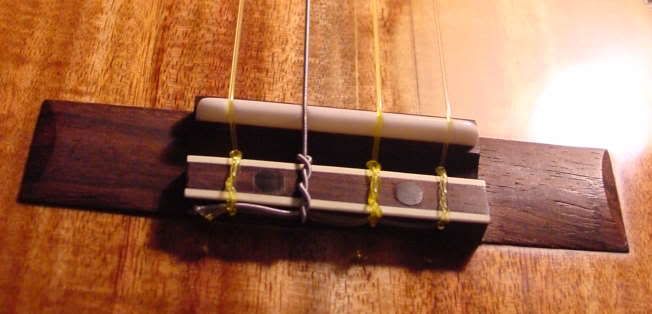imperialbari
Well-known member
- Joined
- Dec 24, 2010
- Messages
- 123
- Reaction score
- 1
Some ukes and guitars come with bridge inlays that are not glued. Technically it is very easy to lower the string action of such inlays by scraping or filing them.
However I have no chance to set up a workbench or a wise in my home. And anyway the process isn’t reversible without getting a new inlay.
So I would want learning about suppliers offering an assortment of bridge inlays searchable on-line by the parameters of material thickness (for fitting the actual slot), height (I know how to use calipers and also know a reasonable amount of geometry, so that I can make good estimates of the needed height), and length (this parameter is less critical as long as the inlays are long enough - cutting them to length will be no major problem).
As I live in Denmark, a supplier from within the EU will make logistics easier, but imports from any country with a good business and legal reputation certainly will be possible. I have imported several instruments and other items from mostly the US, but also from Canada and from Switzerland aside from frequent deals with several EU countries.
Klaus
However I have no chance to set up a workbench or a wise in my home. And anyway the process isn’t reversible without getting a new inlay.
So I would want learning about suppliers offering an assortment of bridge inlays searchable on-line by the parameters of material thickness (for fitting the actual slot), height (I know how to use calipers and also know a reasonable amount of geometry, so that I can make good estimates of the needed height), and length (this parameter is less critical as long as the inlays are long enough - cutting them to length will be no major problem).
As I live in Denmark, a supplier from within the EU will make logistics easier, but imports from any country with a good business and legal reputation certainly will be possible. I have imported several instruments and other items from mostly the US, but also from Canada and from Switzerland aside from frequent deals with several EU countries.
Klaus


